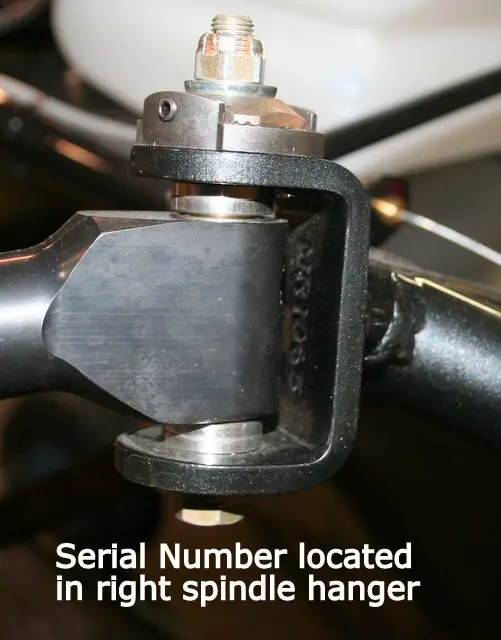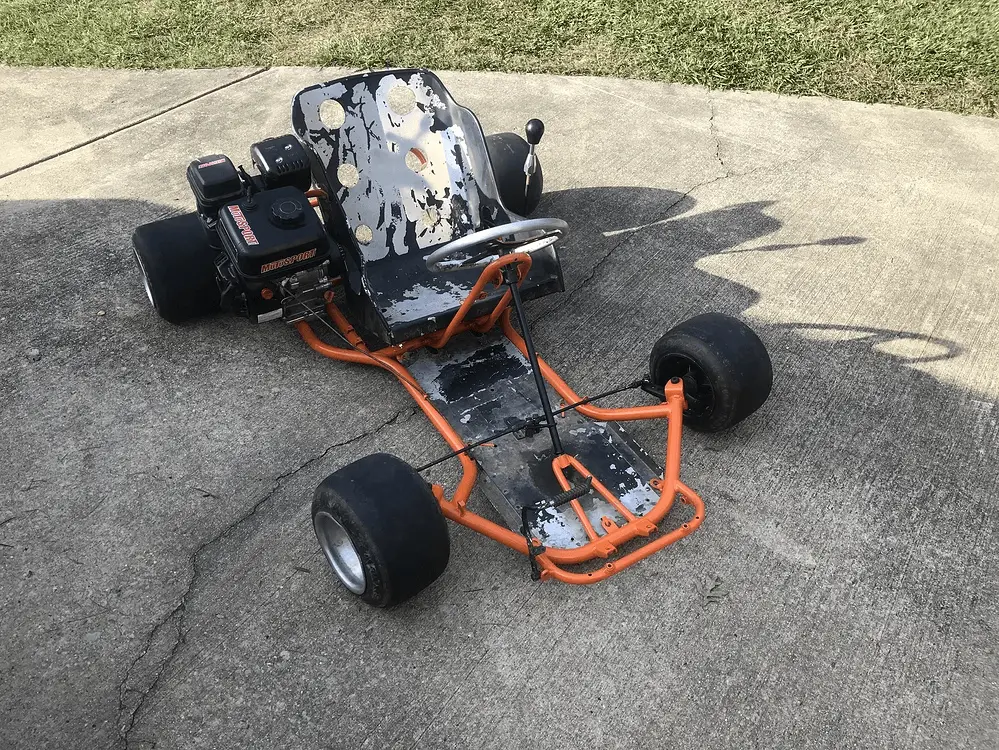To identify a go-kart chassis, look for markings or serial numbers in different locations. These locations are the front side of the seat mount tab, the rear of the floor pan, the back of the rear seat crossmember, or the right spindle hanger.
Identify the type of chassis based on its design and features, such as straight chassis, offset chassis, and caged chassis. Also, examine the suspension system.
Additionally, consider unique designs or color schemes associated with well-known go-kart brands for further identification.
If you want details on how to identify Go Kart chassis, read the next sections.

How To Identify Go Kart Chassis
To identify a go-kart chassis, you can follow these steps:
Look for Markings or Serial Numbers:
Examine the chassis carefully for any markings or serial numbers. These can usually be found on the different parts of the chassis based on the make of the chassis. Especially there are four possible locations that may contain the serial number.
Front Side of Seat Mount Tab:
Many Panther X model karts had their serial numbers stamped on the front side of the seat mount tab, which featured 5 holes. These serial numbers were typically four digits and may have been preceded by a letter.
However, records on these karts are incomplete, so positive identification may require the submission of photos. If you have a Panther X model kart, check the front side of the seat mount tab for the serial number.
The Rear of the Floor Pan:
The late 1970s and early 1980s kart models, such as the Pro-X and AmPac, featured pop-riveted serial number tags. If you have one of these older models, inspect the rear of the floor pan for a serial number tag.
Back of Rear Seat Crossmember:
Brava karts manufactured between 1997 and 2000 had their serial number tag welded to the back of the rear seat crossmember. This tag not only indicated the serial number but also the model number of the kart.
If you own a Brava kart from this production period, check the back of the rear seat crossmember for the serial number tag.
Right Spindle Hanger:
The majority of karts produced in 1982 and beyond feature their serial number stamped into the right spindle hanger. This serial number is typically four to six digits long and may start with a letter.
For example, you might find serial numbers like 90425, B90125, or 87542 on the right spindle hanger. If your kart was produced after 1982, inspect the right spindle hanger to find the serial number.

Note down any information you find, as it can help you identify the manufacturer and model. This is how you can identify vintage go-kart chassis.
Determine the Type of Chassis
It is possible to identify the type of chassis by examining its design and features. Each type of chassis has unique characteristics that make it suitable for different racing conditions.
For example, the Ultramax chassis has some unique characteristics.
Straight Chassis (for racing go-karts):
- Look for a chassis with a straight frame design that is optimized for racing on standard tracks with numerous turns and corners.
- These chassis tend to have a longer wheelbase, which provides stability during high-speed turns and straight-line acceleration.
- They often have a low ground clearance and are designed to keep the kart close to the ground for improved aerodynamics and handling.
- Straight chassis are commonly used in sprint kart racing and other circuit-based competitions.
Offset Chassis (for oval tracks):
- Identify a chassis with an offset frame design, which means that the left side of the chassis is longer than the right side.
- The offset design helps balance the kart’s weight distribution during left-hand turns on oval tracks.
- These chassis may have a more robust construction to handle the additional stress of oval track racing.
- Offset chassis are prevalent in oval track racing disciplines, such as dirt track or asphalt oval karting.
Caged Chassis (for off-road kart racing):
- Look for a chassis with a protective roll cage surrounding the driver’s area, designed to enhance safety during off-road racing.
- Caged chassis typically have higher ground clearance to tackle rough terrains and uneven surfaces.
- They might feature larger tires with knobby tread patterns to provide better traction on dirt or gravel tracks.
- Caged chassis are commonly used in off-road karting events and are built to withstand the rigors of off-road racing.
Check the Suspension System
Identifying a go-kart chassis based on its suspension system can provide valuable clues about the manufacturer and model. Here’s how you can use the suspension system to identify the chassis:
Independent Suspension:
Independent suspensions typically consist of shock absorbers (shocks) and springs for each wheel. The presence of an independent suspension suggests that the go-kart is designed for smoother handling and improved traction on uneven surfaces. Many high-performance racing go-karts use independent suspensions.
Solid Axle Suspension:
In solid axle suspension, there are no shock absorbers or springs between the wheels. Solid axle suspensions are more common in entry-level or recreational go-karts. They are simpler and less expensive than independent suspensions and do not provide the same level of performance on rough terrain.
Identify the Brand:
Some go-kart manufacturers have distinct designs or color schemes. Research well-known go-kart brands and see if the chassis design matches any of them. For instance, Kosmic Kart is recognized for its blue and fuchsia color scheme, while Tony Kart has a distinctive green and white scheme.

Also, once you have identified the brand you can contact them for more information.
Other than that, if you have gathered some information about the manufacturer, try to access their official catalog. Look for the model and specifications of the chassis that resemble the one you are trying to identify.
Frequently Asked Questions (FAQs):
How do I know if my kart chassis is straight?
To check if your kart chassis is straight, place it on a level surface, lock one front wheel, and lift the opposite rear wheel. Measure the height it lifts off the ground. Repeat on the other side. A significant difference in height indicates potential chassis misalignment.
What is the difference between chassis and rolling chassis?
The chassis is the load-bearing frame that supports the vehicle body. On the other hand, the rolling chassis includes the chassis coupled with the powertrain components. Like the engine, drivetrain, wheels, and transmission.
Is a kart axle hard or soft?
A kart axle can be either hard or soft, depending on the desired handling characteristics and track conditions. Using a softer axle provides more grip, which can be beneficial on tracks with low traction or in wet conditions. On the other hand, opting for a harder axle can free the kart off turns and maintain optimum lap times.
Conclusion
So, knowing how to identify the Go Kart chassis is important but simple. Identifying your go kart chassis can be a simple process by checking for the serial number, brand name, or model number.
Once you have identified your chassis, you can use this information to find replacement parts, learn more about the performance of your kart, or even sell it for a profit.